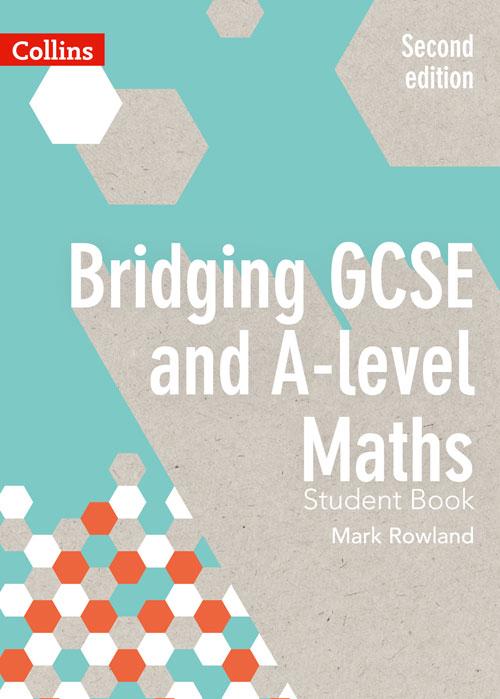
William Collins’ dream of knowledge for all began with the publication of his fi rst book in 1819. A self-educated mill worker, he not only enriched millions of lives, but also founded a flourishing publishing house. Today, staying true to this spirit, Collins books are packed with inspiration, innovation and practical expertise. They place you at the centre of a world of possibility and give you exactly what you need to explore it. Collins. Freedom to teach.
An imprint of HarperCollins Publishers
The News Building
1 London Bridge Street
London
SE1 9GF
Browse the complete Collins catalogue at www.collins.co.uk




© HarperCollins Publishers Limited 2017
10 9 8 7 6 5 4 3 2 1
978-0-00-820501-0
Mark Rowland asserts his moral right to be identified as the author of this work. All rights reserved. No part of this publication may be reproduced, stored in a retrieval system, or transmitted in any form by any means, electronic, mechanical, photocopying, recording or otherwise, without the prior written permission of the Publisher or a licence permitting restricted copying in the United Kingdom issues by the Copyright Licensing Agency Ltd., 90 Tottenham Court Road, London W1T 4LP.
British Library Cataloguing in Publication Data

A catalogue record for this publication is available from the British Library.
Commissioned by Jennifer Hall
Project editor Amanda Redstone
Project managed by Emily Hooton
Edited by Caroline Petherick
Proofread by Karen Williams
Answers checked by Steven Matchett
Cover design by We are Laura
Internal design by Graham Brasnett
Typesetting by Jouve India Private Limited
Illustrations by Kathy Baxendale and Ann Paganuzzi
Production by Rachel Weaver
Printed and bound by
Revision section Revision section Practice section Practice section Contents 1 Surds and indices 4 77 1 1 Surds 4 77 1.2 Indices 6 78 2 Algebra 1 979 2.1 Basic algebra 9 79 2.2 Solving linear equations 11 80 2.3 Forming expressions 13 81 3 Coordinate geometry 1 15 84 3.1 Straight-line graphs 15 84 3.2 Finding the equation of a line 18 85 3.3 Mid-points and distances 21 86 3 4 Intersections of lines 24 87 4 Algebra 2 2689 4.1 Solving a quadratic equation by factorising 26 89 4.2 Using the quadratic formula 28 90 4.3 Further equation solving 30 92 5 Coordinate geometry 2 33 95 5.1 Transformations of graphs 33 95 5.2 Sketching curves 36 96 5 3 Intersection points of graphs 40 98 6 Trigonometry 43 101 6 1 Trigonometry and triangles 43 101 6.2 The area of any triangle 45 103 6.3 Solving a trigonometric equation 47 105 7 Vectors 50107 7 1 The magnitude and direction of a vector 50 107 7 2 Position vectors 54 109 8 Differentiation 59 110 8.1 Estimating the gradient of a curve 59 110 8.2 The rules of differentiation 63 111 8.3 Applying differentiation 66 113 9 Integration 70 115 9.1 The rules of integration 70 115 9.2 Applying integration 73 116 Practice section 77 Answers 119 Exam paper 137
Introduction
Welcome to Collins Bridging GCSE and A Level Maths Student Book. This book helps you to progress smoothly onwards from GCSE Maths with detailed examples and plenty of practice in the key areas needed for success at A Level.
Revisiting GCSE
Consolidate your knowledge of difficult GCSE topics with graded worked examples.
Moving on to A Level







Find out how the strategies you learnt at GCSE are extended and explored with A Level worked examples.
Key points
Look out for the blue ‘Key points’ boxes that highlight the most important things to remember for each topic.
Handy hints and A level Alerts





















Find valuable ‘Handy hint’ boxes throughout the book and understand methods that are specific to A Level with ‘A Level Alert!’ boxes.
Common errors and Checkpoints
































































































































Avoid the common misconceptions that students regularly make with ‘Common errors’ boxes and discover useful ways to check your workings with ‘Checkpoint’ boxes.
Practice section

2






8 Practice: Differentiation
Increase your confidence and improve your skills with comprehensive practice sections, packed with questions, dedicated to each topic. Look out for questions that have the problem solving icon PS . These questions test your ability to reason and think your way through a problem.
Exam practice
Ensure you are ready to start your A Level course by taking the tear-out exam paper at the back of the book.








Answers










































Find all the answers to the practice exercises at the back of the book. The exam paper answers are available on request from education@harpercollins.co.uk

PRACTICE: DIFFERENTIATION 110
8.1 Estimating the gradient of a curve 1 The diagram shows part of the curve yx which passes through the points A(1, 1), P(2, 4), and B(3, 9). The tangent to the curve at P has been drawn. accurately P (2, 4) a Find the gradient of PB b Find the gradient of AP The gradient of the tangent to the curve at P is where is an integer. c Use your answers to a and b to write down the value of m 2 The diagram shows part of the curve y 4 3 which passes through the point P(1, 7). Use each of these points to find an estimate for the (1, 7) gradient of the curve at P. In each case, state whether the answer gives an underor over-estimate for this gradient. i Q(0.5, 4) ii R(1.5, 12) iii The point S where x 2 giving your answer to 3 significant figures. b State, with a reason, which of the answers found in part gives the best estimate for the gradient of the curve at P 3 The diagram shows the curve y 4 7 which passes through the points P(3, 4), Q(4, 7) and R Point R is the minimum point on this curve. y x 0 (3, 4) Q (4, 7) a Write down the gradient of the curve at point R b By expressing 4 7 in the form ) b for constants and b find the coordinates of point R The gradient of the curve at point P is m where m is an integer. By finding the gradients of the chords PQ and RP show that m 2. d Write down the gradient of this curve at the point where 1. 4 By calculating GradPQ where Q is a point on the given curve, obtain an estimate for the gradient of each curve at point P a Curve: y 2xx 4, point P(2, 10), point Q(2.5, 14). Handyhint Use the symmetry of the curve. PRACTICE: DIFFERENTIATION 111 b Curve: y 3 4 point P(2, 10), point Q(1.75, 7). c Curve: y 2x 1, point P( 2, 9), point Q with x-coordinate 1.5. d Curve: y 2x 7 x 0 point P has -coordinate 1, point Q has y-coordinate 5. 5 The diagram shows part of the curve y 1 4x 5 which passes through the point P with x-coordinate 3. By choosing a suitable pair of points A and B on this curve either side of P show that the gradient of the curve at P is 1.5, correct to 1 decimal place. 6 The diagram shows part of the curve y 2 3 which passes through the point P with x-coordinate 2. By choosing a suitable P pair of points A and B on this curve either side of P determine the gradient of the curve at point P correct to 2 decimal places. 7 The diagram shows part of the curve y 2x The line y 5 3 intersects this curve at points P and Q The dotted line is the tangent to the curve at P. Point 0 is the origin. Q accurately The equation of the tangent to the curve at P is ymxc where m is an integer and c 0. By comparing the tangent at P with the line PQ explain why m 5. b Use algebra to find the coordinates of P and Q The tangent at P intersects the line OQ at a point which has a positive x-coordinate. Explain why 3. d Write down the value of m and hence find the equation of the tangent to the curve at P 8.2 The rules of differentiation 1 Use differentiation from first principles to show that: a if y 3x then y x d d 6 b if yx 5x then yxd d 25 2 It is given that (xhx 3xh 3xhh Find a similar expression for h) b Use differentiation from first principles to show that if yx then y x x d d 4 For questions 3 to 10, use the 1) rule to differentiate each equation. 3 Find an expression for yd d for the curves with these equations. Factorise each answer as far as possible. y 4 1 b y (2 1)(2 3) c yx 6x 5 d yx (x 4) y 3)( 5) f y ( 1) 4 Find the gradient of the curves with these equations at the points indicated. a yx 2x 1 at the point P where x 1 b yxxx 1 2 34 at the point Q where x 2 y 3)( 9) at the point R where y 0 d yxx 1 8 1 at the point S where this curve intersects the line yx 5 A curve has equation y 2 5 3. Find the gradient of this curve at each of its PS PS PS ALGEBRA 2 26
4.1 Solving a quadratic equation by factorising What you should already know xx xx In th s sect on you w ll learn Rev si ng GCSE GCSE Example 1 x2 x Work ng xx 18 18 3763926 Handyhint Use the factorisation method you learnt at GCSE Handyhint Write 7 9 2 rather than to avoid issues with negative signs ALGEBRA 2 27 x(xx xx xx xx 2 3 x Mov ng on to A Level A Level Example 2 ABCDx EFGHEF FG ABEF HG Work ng x xx xxxx xxx xx xx xx EF xEFFG EFGH Handyhint Make use of any given information (in this case, the two shapes have equal area) Commonerror (3 2)(x 3) 0 does not mean 2 is solution to this equation Checkpoint Check that 3 is solution to the equation 3 0 3(3) 7(3) 6 27 21 (checked) ALevelAlert! You need to think your way through problem Ask yourself questions such as ‘what do need to find first in order to find the perimeter?’ ALevelAlert! You may need give a reason why a particular solution should be ignored Handyhint You have to make one side equal to 0 in order to solve the equation by factorisation Handyhint Make sure you answer the question being asked (in this case, to find the perimeter of the path) EF HG
4 Algebra
7 Vectors
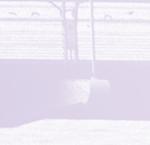
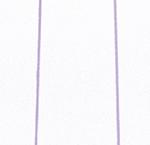
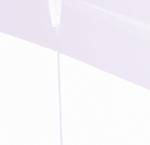




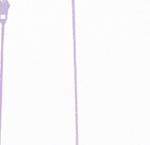
7.1 The magnitude and direction of a vector
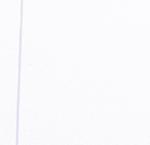
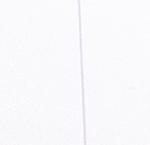
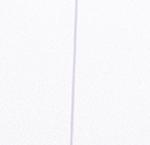
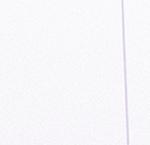
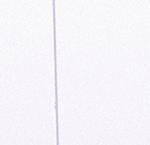
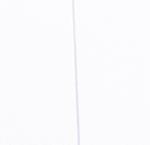
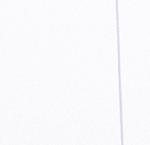
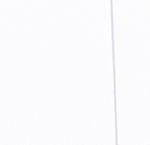
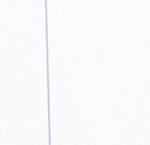
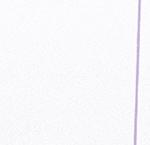
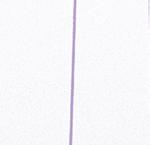
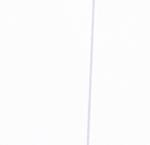
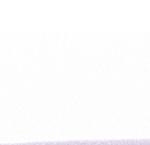
What you should already know:
• how to add and subtract column vectors, for example:
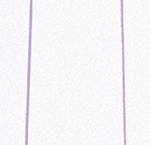
• how to multiply a column vector by a number, for example:
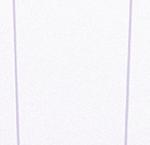
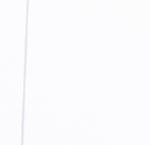
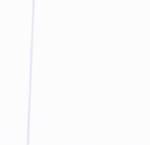
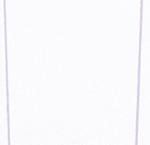

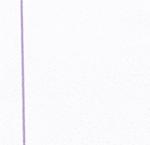

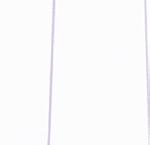
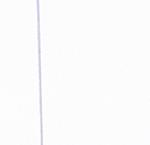
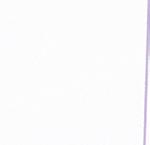
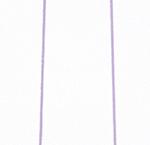







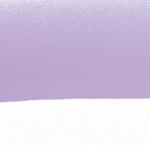







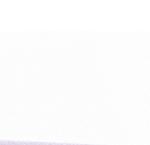
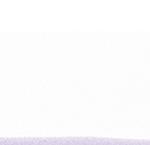
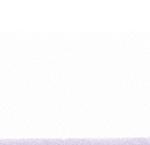

In this section you will learn:
• how to find the magnitude and direction of a vector.

• how to write a vector in i – j form.
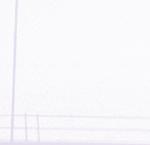
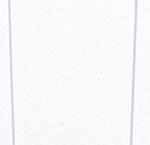

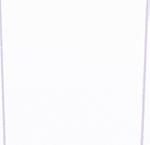
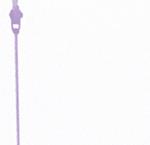

Revisiting GCSE
You know that the column vector

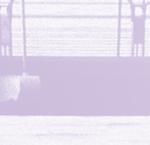
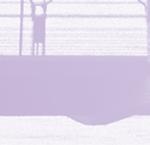
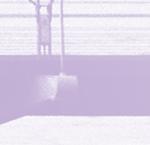
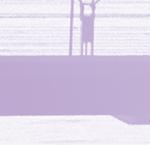
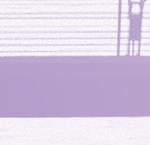

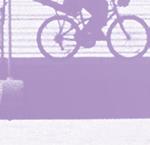

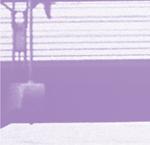
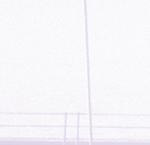
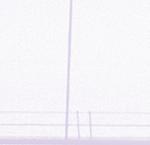
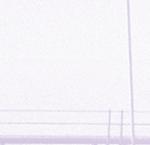
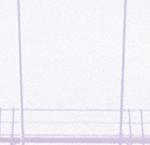
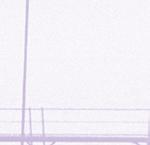
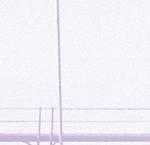
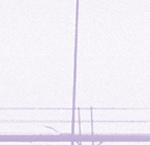
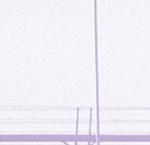
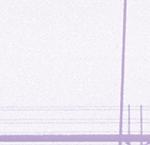
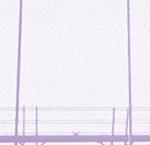

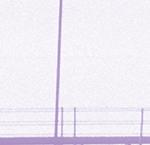
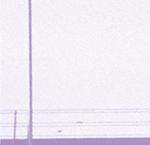
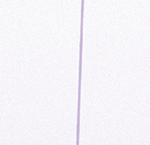
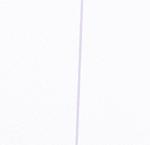
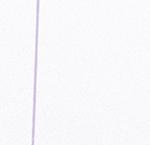
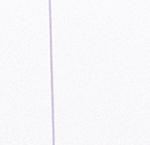

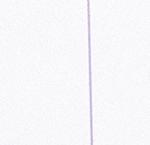
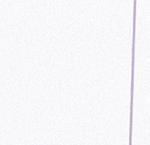
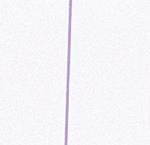
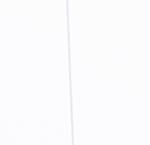
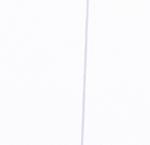
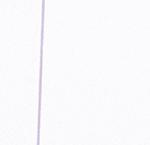
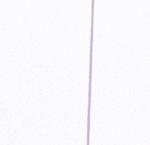
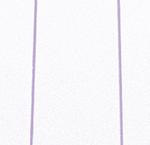

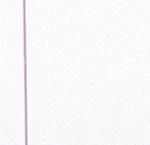
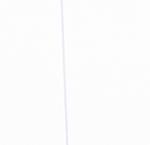

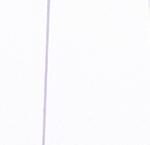
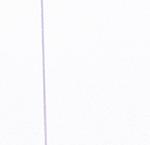
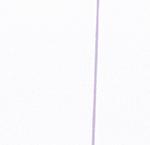

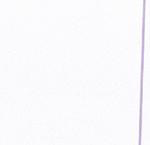
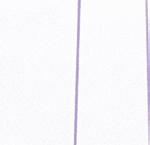
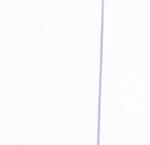
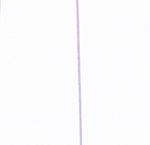
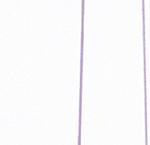
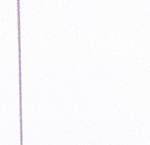

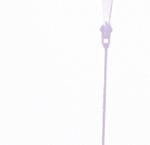

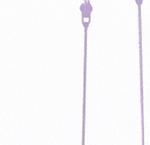
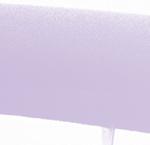


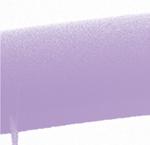
means ‘move 2 steps right and 3 steps up’ and that you can use bold lower-case letters to represent vectors.

GCSE Example
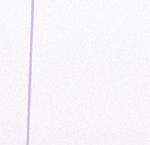
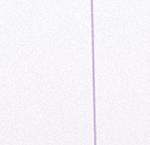
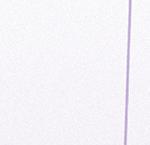
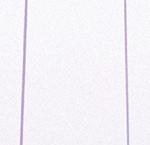
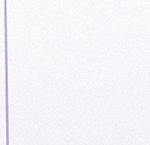
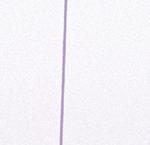
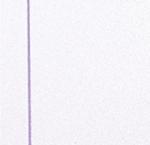
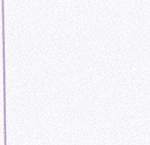
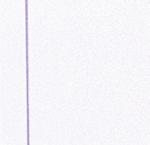
The


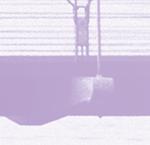







by multiplying each number in vector a by 2.

VECTORS 50
3 2 4 1 2 1
3 2 5
2 3
1
vectors a 4 3 and b 3 4 Work out: a 2a b b 3a 2b Working a You work out 2a
a 4 3 so 2 24 23 8 6 a
Handy hint
Add the top numbers: 8 3 11. Add the bottom numbers: 6 ( 4) 6 4 2.
You can draw a directed line to represent the vector
Since 2 3
means ‘move 2 steps right and 3 steps up’, this vector has horizontal component 2 and vertical component 3
A vector is completely described by its magnitude and direction
The diagram shows the vector a.
Key point
• The magnitude of a is the length of the line representing a
• You write a a for the magnitude of a
• The direction of a is the angle θ between this line and the positive horizontal.
• You can assume all directions are measured against the positive horizontal and lie in the range

You use the components of a vector to calculate its magnitude and direction.
A Level Example 2
The vector AB
.
a Find the magnitude of AB , giving the answer to 1 decimal place.
b Find the direction of AB , giving the answer to the nearest degree.
Working
Handy hint
The vector AB is the directed line from point A to point B
Sketch the vector AB
, showing its components and direction θ.
The triangle shown is right-angled.
VECTORS 51 So 2+ 8 6 + 3 –4 ab 83 64 11 2 b 32 3 4 3 –2 3 -4 ab – 12 9 6 8 12 6 98() 6 17
a 2 3 .
3 2
3 2
Common
12 9 6 8 is not equal to 6 1
error
0° θ
a 2 3 a θ positive horizontal magnitude A θ 3 B 2
, 360°.
a Use Pythagoras’ theorem to calculate the magnitude of AB . AB 3222
Common error
13 3.605… AB 3.6 (1 decimal place).
b Use trigonometry to calculate angle θ tan opposite adjacent θ
Handy hint
Use tan because you are given the opposite and adjacent sides to θ in the triangle.
33.69…° AB has direction 34° (nearest degree).
Key point
3222 + is not equal to 3 2. Add the squares then square root the answer. At A Level, vectors are also written using a combination of the vectors
Key point
•
VECTORS

52
2 3
2
1 θ
So tan
3
()
y has: • magnitude x y xy22 • direction θ, where y x tan, 0 x θ .
The vector x
i 1 0 and j = 0 1 . For example,
3 4 as 3 1 0 4 0 1 , or 3i 4j. 3i 4j is the vector 3 4 written in i – j form.
you can write
x y xy ij column
vector i j form The vector xi yj has:
• magnitude xy xy ii jj 22
direction θ, where y x tan, 0 x θ . ↑ ↑
A Level Example 3
For the vectors a 2i 3j, b 4i 8j and c 4i pj, it is given that 3a 2b qc 0, where p and q are constants. Find the magnitude of c, giving the answer in simplified surd form.
Working
Find the components of 3a 2b qc
3a 2b qc 3(2i 3j) 2(4i 8j) q(4i pj) (6i 9j) (8i 16j) (4qi qpj)
Combine like components: (6 8 4q)i ( 9 16 qp)j
Simplify: (14 4q)i (7 qp)j
So (14 4q)i (7 qp)j 0i 0j
Equate i components: 14 4q 0
Solve for q: q 3.5
Equate j components: 7 3.5p 0
Solve for p: p 2
So c 4i 2j and hence cc 4222
Handy hint
0 0i 0j is the zero vector.
Handy hint
You may find it helpful to write a, b and c as column vectors.
Handy hint
Use the value of q to find the value of p
At A Level, particularly when studying Mechanics, it is important to be able to find the components of a vector from its magnitude and direction.
A Level Example 4
The vector q 4i j and the vector r has magnitude 4 and direction 65°. Find the magnitude and direction of q r. Give answers to 1 decimal place.
Working
You first need to find the components of r
Let r xi yj where components x and y are to be found. The sketch shows the magnitude and direction of r
Use trigonometry on this right-angled triangle to find x and y x cos65 4 ° so x 4 cos 65°
1.6904… y sin65 4 ° so y 4 sin 65°
3.6252…
So, to 2 decimal places, r 1.69i 3.63j.
Working to 2 decimal places, calculate the components of q r.
q r ( 4i j) (1.69i 3.63j)

2.31i 4.63j
So q qrr 2314 63 2 2 ( )
26.773
5.1742…
q qrr 52 (1 decimal place)
Sketch the vector q r to find its direction θ.
Handy hint
Round components to 2 decimal places so that the final answers are correct to 1 decimal place.
Common error
Do not enter –.2314 63 22 + on your calculator. Use brackets with negative numbers.
Common error
qr + is not equal to qr + because q and r have different directions.
VECTORS 53
20 25
65° x y r = 4 4.63 θ q + r α –2.31
From the sketch, θ 180° α where the acute angle α is such that tan 4.63 2.31 α
Calculate α : tan 4.63 2.31 1 α () 63.4844…°
Calculate θ: θ 180° α 180° 63.4844…° 116.5155…°
q r has direction 116.5° (1 decimal place).

Key point
• The vector a with direction θ has: horizontal component a acos θ vertical component a asin θ.
• Always sketch a vector when finding its direction.
Common error
tan α is not equal to 463 –.231
To find α, ignore signs on the components.
The diagrams explain how to find the direction θ of a vector a when θ is not acute. In each diagram, α is an acute angle.
Taking it further
You will use vectors to solve problems in Mechanics. Forces are vector quantities and can be added or subtracted by writing them in component form.
7.2 Position vectors
What you should already know:
• how to use the triangle law of vector addition: AB BC AC .
• how to solve geometrical problems using vectors.
In this section you will learn:
• how to find the position vector of a point.
• how to use position vectors to find the distance between two points and solve geometrical problems.
At GCSE, you solved geometrical problems using vectors.
VECTORS 54
90° θ 180° θ a α Direction: θ = 180° – α 180° θ 270° θ a α Direction: θ = 180° + α 270° θ 360° θ a α Direction: θ = 360° – α
GCSE Example 5
In triangle ABC, M is the midpoint of AB and N is the midpoint of AC
a Show that MN is parallel to BC
b Find the ratio of the area of triangle AMN to the area of the trapezium MNCB.
Working
a You need to express MN in terms of the vector BC M is the midpoint of AB so MA BA 1 2 .
Similarly, AN AC 1 2 .
By the triangle law of addition: MN MA AN BA AC 1 2 1 2 BA AC 1 2 ()
Now use the triangle law again: BC 1 2
Handy hint
Use vectors to express the information you are given about M and N
Handy hint
Think of + as meaning ‘followed by’ MA followed by AN is equivalent to MN
So MN BC 1 2 . This means MN has the same direction as BC but is half its length. This proves MN is parallel to BC
b From the result in part a, ABC is a scale factor 2
enlargement of AMN.
So area ABC 4 area AMN.
Hence, area of MNCB 3 area AMN.
Triangle AMN and trapezium MNCB have areas in the ratio 1 : 3.
At A Level, you need to work with position vectors.

Key point
Handy hint
Area scale factor (length scale factor)2
• The position vector of the point P is the vector OP , where O is the origin.
is equivalent to saying P has coordinates (a, b).
For example, the point with coordinates P(2, 3) has position vector OP
, as shown in the diagram.
Using position vectors, you can find the vector joining two points. If A and B are any two points then, by the triangle law of addition, OA AB OB .
VECTORS 55
A B C M N
3
2
1 0 2 3 y x 1 2 3 P 2 3
• OP a b
You can rewrite this equation as: AB OB OA .
Key point
For any two points A and B, AB OB OA .
You can use this result to solve geometrical problems.

A Level Example 6
Relative to the origin O, points A and B have coordinates (1, 2) and (4, 2), respectively.
a Find AB .
Point C has coordinates (13, k), where k is a positive constant. Given that AC 13:
b find the exact perimeter of triangle ABC
Working
a First find the components of AB .
A Level Alert!
The word ‘respectively’ is used frequently at A Level. It means you pair items off in the obvious order, so here, A(1, 2) and B(4, 2).
are the position vectors of A and B, respectively.
Checkpoint
Verify this answer by finding the length AB using the distance formula – see Section 3.3.
b Sketch triangle ABC, showing all known lengths. Use the information AC 13 to find k:
VECTORS 56
0 y x A B
OA 1 2 and OB 4 2
AB OB OA 4 2 1 2 3 4 So: AB 34 2 2() 25 5
AC OC OA k 13 1 2 k 12 2 0 y x A B C 5 13
Express AC 13 as an equation involving k:
()
Handy hint
You can still sketch the triangle even though you do not know where to place C
each side:
()
So: k 12 213 2
Square root each side: k 2 5
Solve for k: k 7 or k 3
So k 7, because k is positive.
Hence, AC 12 72
Now find BC so that you can calculate BC
So: BC 9922 92
The perimeter of triangle ABC 59 213 18 92 units.
You can use position vectors to prove geometric formulae.
A Level Example 7
The diagram shows points A and B with coordinates (x1, y1) and (x2, y2), respectively.
M is the mid-point of AB
Use vectors to prove that the coordinates of M are xx yy 2 ,
Handy hint
You could solve the equation (k 2)2 25 by expanding the brackets to form a quadratic, but taking square roots is quicker.
Handy hint
Underline and make use of all the important information in the question (in this case, that k is positive).
Handy hint
BA AB = – since BA and AB have equal lengths but opposite directions.
M is the mid-point of AB so AM AB 1 2
You need to find an expression for the position vector OM By the triangle law:
Handy hint
Where possible, work with vectors rather than their components.

VECTORS 57
AC
2 2
k 12 2
2
Square
122 (k 2)2 132 So: (k 2)2 169 144 25
12 5
BC BA AC AB AC where AB 3 4 3 4 12 5 9 9
2
12 Working OA x y 1 1 and OB x y 2 2 .
12
OA AM OA AB 1 2 Use AB OB OA : OA OB OA 1 2 () OA OB 1 2 1 2 0 y x A B C 5 13 9 2 0 y x A B M
OM
Handy hint
Remember
which proves that the coordinates of M are
You might like to compare the proof about mid-points in this example with that given in Section 3.3.
Taking it further
As you progress through your course you will study vectors in three dimensions. You will also learn how to use vectors to solve problems involving projectile motion.

VECTORS 58 Simplify: OA OB 1 2 () Use components of OA and OB : x y x y 1 2 1 1 2 2 So OM xx yy 1 2 12 12 + +
xx yy 2 , 2 12 12 .
that,
point P, OP a b = means P has coordinates (a, b).
for any
Practice: Vectors 7
7.1 The magnitude and direction of a vector
All directions 0° 360° are measured against the positive horizontal.


Where appropriate, give magnitudes in simplified surd form unless told otherwise.
1 Find the magnitude and direction of these vectors. When not exact, give angles to 1 decimal place.
i p 1 2q ii 3p 2q iii 4q 3p
b Find the vector r such that 2p 1 7q 1 4r 5 0, where 0 is the zero vector. Give your answer in i – j form.
6 a Given that p 13 , where p 5 5i 1 aj, find the value of the positive constant a.
b Given that the direction of qi j b 12 is 60°, find the value of b.
c Find the direction of r 5 ci 1 dj, for c and d positive constants, given that r 2d
7 Try this question without using a calculator.
The vector c 1 3
2 Given that p
the magnitude and direction of these vectors. a
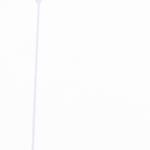
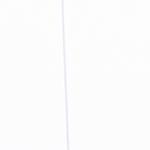

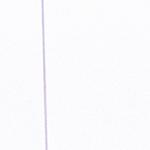
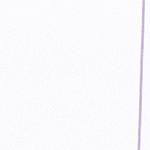
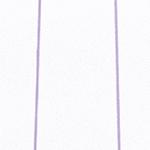

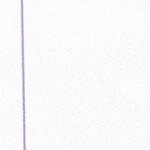
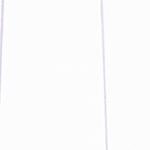

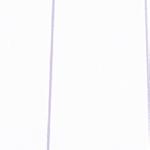
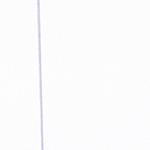

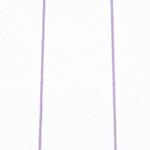

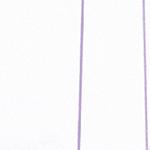
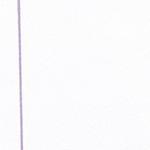




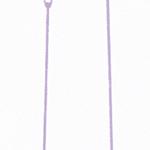

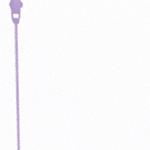















and
3 Express these vectors in component form.


a The vector p, magnitude 6, direction 30°.
b The vector q, magnitude 4, direction 120°.
c The vector r, magnitude 5, direction 270°.
d The vector s, magnitude 2 , direction 315°.
4 The vectors p











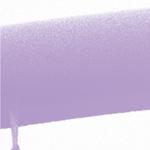
12

and q 3 1
.
a By finding their directions, show that p and q are perpendicular.
b Find PQ , where OP p and OQ q
5 Given vectors p 5 5i 3j, q 5 2i 1 2j:

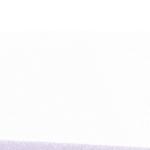

a Find the magnitude and direction of these vectors. Give answers to 1 decimal place.
Handy hint
Two vectors are perpendicular if the angle between the lines representing them is 90°.
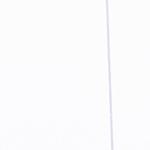
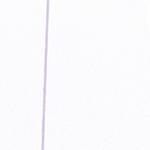
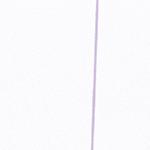
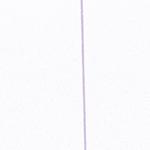

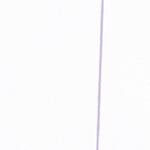
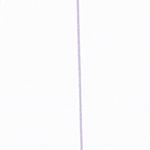
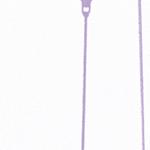
and the vector d has magnitude 6 , direction 45°.
a Find the vector d. Give components in surd form.
b Find the direction of c 1 d
c Find the magnitude of c 1 d.
8 The diagram shows triangle UVW
The line WU passes through the origin O and makes an angle of 45° against the positive x-axis.
OU 5 8 cm and OW 5 3 cm.
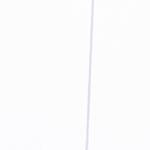
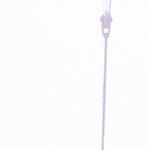
Handy hint
If needed, revise your trig ratios, for example, tan 60° =3 them is 90°.
PRACTICE: VECTORS 107
a 3 3 b 5 12 c 6 2 d 6 2
3 5
q 5 3 find
p 1 q b p q c 3p 5q d
1 15 53pq ()
2
PS PS
0 y x W U 45° V Handy hint For part c use 33 33 1 () .
The lines OV and WU are perpendicular and the area of triangle UVW is 22 cm2.
a Find these vectors. Give answers in i – j form, leaving components as surds.
i OU ii OW iii OV
b Find the exact perimeter of triangle UVW
7.2 Position vectors
1 a Write down the position vectors of the points with these coordinates.
i A(3, 2) ii B(4, 3) iii C 33,3 3 ()
b Which of these three position vectors has the greatest magnitude?
c On a single diagram, sketch the position vectors of points A, B and C.
2 For each of these pairs of points find:
i AB ii AB .
Give answers in simplified surd form where appropriate.
a A(7, 2), B( 3, 4)
b A( 3, 6), B(5, 2)
c A 8, 1 () , B 18 ,3 ()
3 Points A, B and C have coordinates A( 2, 3), B(1, 4) and C(7, 6).
a Show that A, B and C are collinear:
i by finding the vectors AB and BC
ii by finding the equation of the line which passes through points A and B.
5 The diagram shows points A, B and C.
Handy hint
Collinear means A, B and C lie on the same straight line.
b Comment on which of the methods used in part a you found easier to use.
4 a Given that AB 5 where A(2, 7) and B(k, 4), find the possible values of k
b Show, on a single diagram, point A and the two possible positions of point B
c Which of these three points is furthest from the origin?

Relative to the origin O, point A has coordinates ( 1, 1)and point B has coordinates (2, 3).
a Find the magnitude and direction of OA . Point C is such that AC AB 2 .
b Find the magnitude and direction of OC
c Show that triangle AOC has area 5 square units.
6 The diagram shows triangle ABC, where, relative to the origin O, the position vectors of points A and B are 3i 1 j and i 1 7j, respectively.
Given that AC k 8ij and BC k42ij
a Show that k 5 2.
b Find the exact lengths of the three sides of the triangle ABC.
Give each answer in the form k , where k is an integer.
c Show that cos 26 26 θ , where 5 angle ABC.
d Using calculator accuracy, find the area of triangle ABC.
PRACTICE: VECTORS 108
0 y x A C B
0 y x A C B
PS
7 Relative to the origin O, the points A, B, C and D form a parallelogram, as shown in the diagram.
Also shown is the mid-point E of BD.
a Show that AB 42ij
b Find the coordinates of point B.
c Prove that = .
9 The diagram shows a trapezium OABC, where O is the origin, and sides AB and OC are parallel.
a Explain why AB DC .
b Starting with the equation
AE AB BE show that AE DC BC 1 2 () .

c Hence show that AE AC 1 2 and explain what this result tells you about the diagonals of a parallelogram.
8 The diagram shows the points A, B and C.
Relative to the origin O, the position vectors of A and C are 2i 1 8j and 12i 1 3j, respectively.
The position vectors of A and C are
and
respectively, and the y-coordinate of B is greater than 2.
a Show that the position vector of B can be written in the form
for k a positive constant.
The lengths of the diagonals of this trapezium are equal.
b Find the coordinates of point B.
c Find the interior angle ABC.
Point B on AC is such that AB AC 2 5
Angle AOB 5 and angle BOC = .
PRACTICE: VECToRs 109
0 y x A E B C D
0 y x A α B C β
0 y x A B C
1 2
6 2
k k 61 22
PS PS PS
8 a Hint: Apply a suitable translation to the graph of y 5 sin x
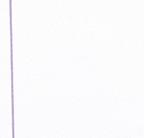
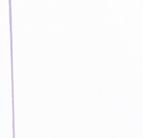
b x 5 78.5°, x 5 281.5°





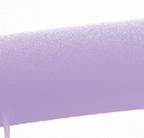
c x 5 48.6°, x 5 131.4°

9 a 30° b 210°
c x 5 233.1°, x 5 306.9°
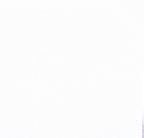
10 a Hint: Sketch the graph of y 5 sin x and the line y 5 5 4 on the same diagram.
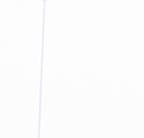
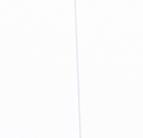
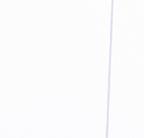
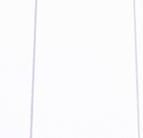
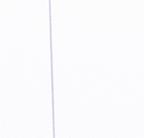
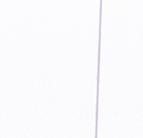
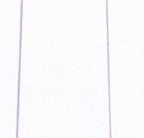
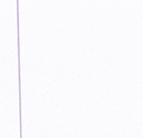
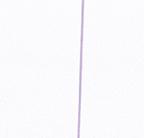
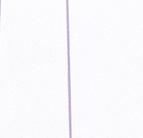
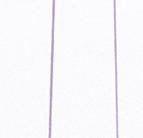
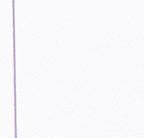
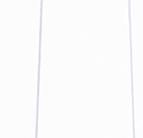
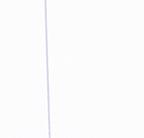
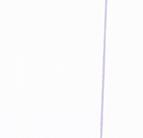
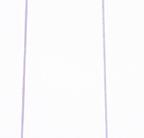
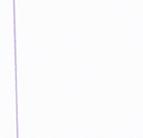

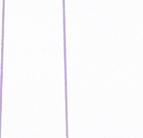
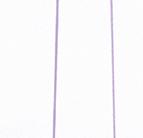

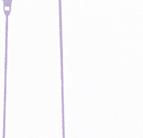
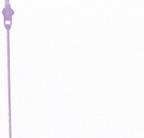
b i Not possible as cos x 1 for all x

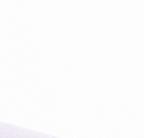
ii 270°



iii Not possible as sin x 1 for all x
iv x 5 41.4°, x 5 318.6°
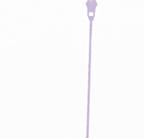
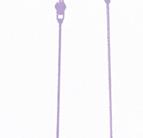
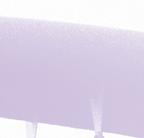
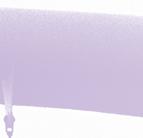
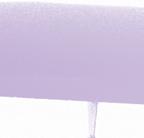
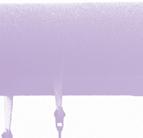
7 Vectors

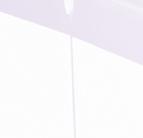



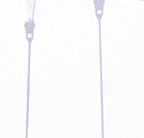
7.1 The magnitude and direction of a vector
11 a Stretch, scale factor 1 a , along the x-axis from the origin. b x 5 23.6°, x 5 156.4°
Answer: Perimeter 16 45
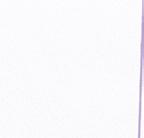
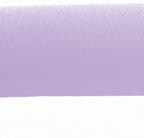
7.2 Position vectors
Answers to part a rounded 1 decimal place.
ANSWERS 131
5 5.9°,
iii x 5 15.7°, x 5 104.3° 12 a x 5 112.0°, x 5 248.0° b i x 5 37.3°, x 5 82.7° ii x 5 56.0°, x 5 124.0° 13 a x 5 286.3°, x 5 73.7°, x 5 73.7°, x 5 286.3° b x 5 319.5°, x 5 220.5°, x 540.5°, x 5 139.5° c x 5 135.6°, x 5 44.4°, x 5 224.4°, x 5 315.6° d x 5 246.4°, x 5 113.6°, x 5 113.6°, x 5 246.4°
c i x 5 11.8°, x 5 78.2° ii x
x 5 39.1°
1 a 32 ,45 θ ° b 13, 5 112.6° c 210, 341.6 θ ° d 22 , 210 θ ° 2 a 82 ,45 θ ° b 22 , 135 θ ° c 16, 5 180° d 16 15 ,90 θ ° 3 a p 630 630 33 3 cos sin ° ° b q 2 23 c r 0 5 d s 1 1 4 a Hint: work out direction of q minus direction of p. b 25
a i 9.1, 5 6.3° ii 17.0, 5 310.2° iii 18.4, 5 112.4° b r 5 6i 2j 6 a a 5 12 b b 5 2 c 30° 7 a d 645 645 3 3 cos sin or 33ij b 60° c
3 () 8 a i 42 42 ij ii 32 2 32 2 ij iii 22 22 ij
Hint:
Pythagoras
lengths UV and VW.
5
21
b
Use
to find the
1 a i 3 2 ii 4 3 iii 33 33 b OB (magnitude 5 5)
3 a i Hint: Show that BC AB 2 .
ii Hint: show that an equation for the line through A and B is 3y 5 x 1 11.
b You probably found the vector approach more straightforward. It has the advantage in telling you that the ratio AB : BC 5 1 : 2
5 a 2, 135 θ °
b 52 ,45 θ °
c Hint: first show that OA and OC are perpendicular.
6 a Hint: Use OC OA AC and OC OB BC
b AB BC AC 52 ,32, 68
c Hint: Use the cosine rule ba cacB 2cos ˆ 22 2
d Hint: Use ac B 1 2 sin ˆ . Area 5 20 square units
7 a Hint: Use the definition of a parallelogram.
b Hint: Use the results AB DC and BE BD 1 2
c Hint: Use the result AB DC
Answer: E is the midpoint of AC so the diagonals of a parallelogram bisect each other.
8 a Hint: Use AC OC OA to find AC

b (6, 6)
c Hint: Use the cosine rule to find the exact values of cos and cos .
9 a Hint: Use the fact that AB is parallel to OC
b Hint: Show AC 5 and then solve the equation
Answer: B(4, 3)
c Hint: Find AB , BC and then use the cosine rule on triangle ABC
Answer: Angle ABC 5 135°
ANSWERS 132 c 0 y x A B C 2 a i 10 2
226 b i 8 4
c i 2 4
ii
ii 45
ii 32
a
2
6 b 0 y x A B1 B2
4
k 5
or k 5
c Point A
6 2
k k 61 22 5














































































































































































































































































